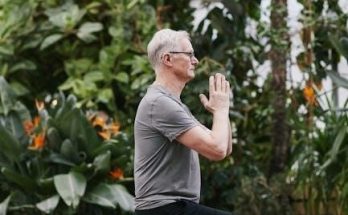Kouzes and Posner Leadership Model⁚ A Comprehensive Guide
The Kouzes and Posner Leadership Model, popularized in their book “The Leadership Challenge,” provides a framework for understanding and developing effective leadership. It is based on extensive research and real-world observations, offering practical insights into the behaviors and practices that drive exceptional leadership. This model emphasizes the importance of five key practices⁚ Model the Way, Inspire a Shared Vision, Challenge the Process, Enable Others to Act, and Encourage the Heart; By understanding and applying these practices, leaders can create a positive and productive environment where individuals thrive and achieve their full potential.
Introduction
The Kouzes and Posner Leadership Model, a cornerstone of leadership development, has garnered widespread recognition and application across diverse sectors. Its origins lie in the seminal work of James M. Kouzes and Barry Z. Posner, who embarked on a comprehensive research endeavor spanning decades to understand the essence of effective leadership. Their findings culminated in the publication of “The Leadership Challenge,” a landmark book that has become a definitive guide for aspiring and seasoned leaders alike.
The Kouzes and Posner model is not merely a theoretical construct but a practical framework grounded in real-world observations and insights gathered from leaders across various industries and organizational contexts. Through their meticulous research, Kouzes and Posner identified a set of five core practices that consistently distinguish exemplary leaders from their counterparts. These practices, known as “The Five Practices of Exemplary Leadership,” serve as the foundation of their model and provide a roadmap for individuals seeking to develop their leadership capabilities.
The enduring relevance of the Kouzes and Posner Leadership Model stems from its practicality and applicability. It is not a rigid formula but a flexible framework that can be adapted to different leadership styles, organizational cultures, and situational contexts. The model’s emphasis on practical behaviors and actionable strategies makes it accessible and readily implementable, empowering individuals to cultivate their leadership skills and inspire positive change within their organizations and communities.
Overview of the Five Practices
The Kouzes and Posner Leadership Model, grounded in their book “The Leadership Challenge,” posits that exemplary leadership is not an innate trait but a set of learnable and observable behaviors. These behaviors, grouped into five core practices, provide a framework for understanding and developing effective leadership. They are not isolated principles but interconnected elements that work synergistically to create a holistic approach to leadership.
The first practice, “Model the Way,” emphasizes the importance of leaders setting a personal example by aligning their actions with their values and beliefs. This involves clearly communicating their vision and principles and consistently demonstrating the behaviors they expect from others. The second practice, “Inspire a Shared Vision,” focuses on leaders’ ability to articulate a compelling vision that inspires and motivates followers to work towards a common goal. This requires leaders to create a shared sense of purpose and meaning, making followers feel invested in the vision and its realization.
The third practice, “Challenge the Process,” encourages leaders to embrace change and innovation by questioning assumptions, seeking new perspectives, and taking calculated risks. It involves fostering a culture of continuous improvement and encouraging experimentation, even in the face of uncertainty. The fourth practice, “Enable Others to Act,” focuses on creating an environment where followers feel empowered to contribute their talents and ideas. This involves providing support, resources, and opportunities for growth, fostering a sense of collaboration and trust. The fifth and final practice, “Encourage the Heart,” centers on recognizing and appreciating the contributions of followers, fostering a sense of community and shared purpose. This involves celebrating successes, providing positive feedback, and creating a positive and supportive work environment.
Model the Way
At the heart of the Kouzes and Posner Leadership Model lies the principle of “Model the Way,” which emphasizes the critical role of personal credibility in leadership. This practice underscores the idea that followers are more likely to trust and follow leaders who demonstrate integrity, authenticity, and commitment to their values. Leaders who “Model the Way” walk the talk, aligning their actions with their words and beliefs, creating a foundation of trust and respect. They are clear about their values and principles, communicating them effectively and consistently embodying them in their daily interactions.
The “Model the Way” practice involves two key behaviors⁚ clarifying values and setting the example; Clarifying values requires leaders to articulate their core beliefs and principles, making them transparent to their followers. This involves identifying the guiding principles that shape their decisions and actions, ensuring that these values are shared and understood by everyone. Setting the example involves leaders demonstrating the behaviors they expect from others. This means practicing what they preach, leading by example, and showing that they are willing to walk the talk. By demonstrating the behaviors they value, leaders inspire trust and confidence, encouraging followers to emulate their actions and embrace the shared values.
Inspire a Shared Vision
Inspiring a Shared Vision is the second practice in the Kouzes and Posner Leadership Model, emphasizing the power of a compelling vision to unite and motivate individuals towards a common goal. It’s about creating a sense of purpose and excitement, painting a vivid picture of a desirable future that inspires followers to invest their energy and commitment. Leaders who excel in this practice understand the importance of envisioning a future that resonates with their followers, one that aligns with their values and aspirations. They communicate this vision in a way that is both inspiring and clear, using powerful language that captures the imagination and ignites passion.
The “Inspire a Shared Vision” practice is characterized by two key behaviors⁚ envisioning the future and calling for action. Envisioning the future involves leaders articulating a clear and compelling vision of what they want to achieve together. This vision should be aspirational, challenging yet achievable, and inspire a sense of possibility and excitement. It should be more than just a goal; it should be a shared dream, a compelling picture of a brighter future. Calling for action involves leaders engaging their followers in the process of realizing the vision, making it their own. This requires leaders to actively involve their followers in shaping the vision, listening to their ideas, and creating a sense of ownership.
Challenge the Process
The third practice in the Kouzes and Posner Leadership Model is “Challenge the Process,” emphasizing the importance of leaders fostering innovation and continuous improvement. It’s about encouraging a culture of experimentation, risk-taking, and a willingness to challenge the status quo. This practice requires leaders to actively seek out new ideas, question existing assumptions, and encourage a spirit of experimentation.
Leaders who excel in this practice understand that challenging the process is not about simply disrupting for the sake of disruption. It’s about seeking out opportunities to improve, to find better ways of doing things, and to adapt to changing circumstances. They create an environment where people feel comfortable sharing ideas, taking risks, and learning from their mistakes. This often requires leaders to model this behavior themselves, showing that they are not afraid to experiment, to learn from their mistakes, and to embrace the possibility of failure as a stepping stone to success.
Two key behaviors are associated with this practice⁚ searching for opportunities and experimenting and taking risks. Searching for opportunities involves leaders actively seeking out opportunities to improve, to innovate, and to adapt to changing circumstances. This requires leaders to be curious, to be observant, and to be open to new ideas. Experimenting and taking risks involves leaders encouraging their followers to try new things, to challenge the status quo, and to learn from their mistakes. This requires leaders to create an environment where people feel safe to take risks and to learn from their failures.

Enable Others to Act
The fourth practice in the Kouzes and Posner Leadership Model emphasizes empowering others to act. “Enable Others to Act” focuses on building a culture of trust, collaboration, and shared ownership. It’s about creating an environment where individuals feel empowered to make decisions, take initiative, and contribute their unique talents to achieving shared goals. Effective leaders who embody this practice recognize the importance of fostering a sense of autonomy and responsibility among their team members.
This involves more than simply delegating tasks. It’s about creating a supportive environment where individuals feel valued, respected, and equipped with the necessary resources and training to succeed. This involves actively listening to their ideas, providing constructive feedback, and offering opportunities for growth and development. Enabling others to act also entails fostering open communication, encouraging collaboration, and promoting a culture of continuous learning. This allows individuals to feel confident in their abilities, take ownership of their work, and contribute their best to the team’s success.
This practice emphasizes two key behaviors⁚ fostering collaboration and strengthening others. Fostering collaboration involves creating an environment where individuals feel comfortable sharing ideas, working together, and supporting one another. This requires leaders to build trust, encourage open communication, and facilitate teamwork. Strengthening others involves providing individuals with the resources, training, and support they need to develop their skills and grow in their roles. This requires leaders to invest in their team members’ development, provide opportunities for mentorship and coaching, and create a culture where continuous learning is valued.
Encourage the Heart
The final and perhaps most crucial practice in the Kouzes and Posner Leadership Model is “Encourage the Heart.” This practice focuses on building a sense of purpose, connection, and meaning within a team; It’s about recognizing and celebrating individual contributions, fostering a sense of belonging, and creating a positive and supportive work environment. Leaders who embody this practice understand the power of human connection and the importance of building a strong sense of team spirit.
This involves recognizing and appreciating individual contributions, acknowledging and celebrating successes, and fostering a culture of gratitude. It also means creating opportunities for team bonding, fostering a sense of shared purpose, and celebrating milestones together. Encouraging the heart also requires leaders to be genuinely interested in their team members, to understand their individual needs and motivations, and to create a work environment where everyone feels valued and appreciated.

This practice emphasizes two key behaviors⁚ recognizing contributions and celebrating the values and victories. Recognizing contributions involves actively acknowledging and appreciating the hard work and dedication of team members. Leaders who embody this practice make an effort to notice and recognize individual efforts, both big and small. Celebrating values and victories involves creating a culture where successes are celebrated and shared. This could involve acknowledging milestones, recognizing achievements, or simply expressing gratitude for a job well done.
Applications of the Model
The Kouzes and Posner Leadership Model finds wide application in various settings, including businesses, educational institutions, and non-profit organizations. It provides a practical framework for leaders at all levels, from team leaders to CEOs, to develop their leadership skills and inspire their teams. The model’s emphasis on observable behaviors makes it easy to implement and measure, making it an effective tool for leadership development programs.
Organizations can use the model to create leadership training programs that focus on developing the five key practices. These programs can include interactive exercises, case studies, role-playing, and feedback mechanisms to help participants develop their leadership skills. The model can also be used to assess leadership effectiveness within an organization. By evaluating leaders based on the five practices, organizations can identify areas for improvement and develop targeted interventions to enhance leadership skills.
Moreover, the model is particularly relevant in today’s dynamic and complex business environment. The model emphasizes the importance of adaptability, collaboration, and empowerment, which are essential for organizations to navigate the challenges of rapid technological change, globalization, and increasing diversity. By applying the Kouzes and Posner Leadership Model, organizations can cultivate a culture of leadership that fosters innovation, collaboration, and continuous improvement.



